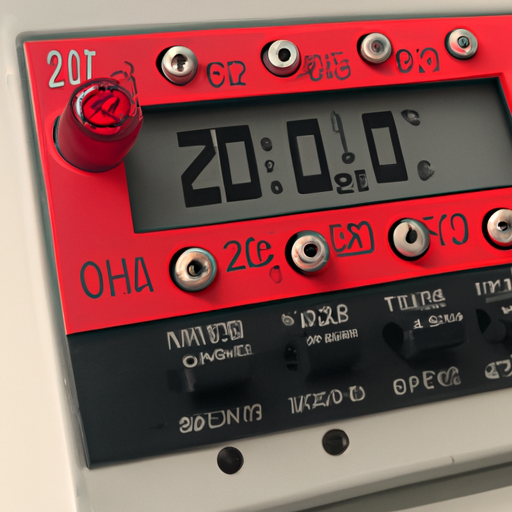The movement panel is an essential component in many types of machinery and equipment, providing the necessary control and monitoring of various movements. Whether it is in industrial automation, robotics, or other applications, the movement panel plays a crucial role in ensuring smooth and efficient operation.

One of the key trends in movement panel design is the integration of advanced communication protocols. With the increasing demand for interconnected and smart devices, movement panels are now equipped with Ethernet, CAN bus, and other communication interfaces to enable seamless integration with other components in the system. This allows for real-time monitoring and control of movements, as well as remote access and diagnostics.
Another important aspect of the latest movement panel specifications is the use of high-performance processors and memory modules. With the growing complexity of automation systems, movement panels need to be able to handle large amounts of data and perform complex calculations quickly and efficiently. Manufacturers are now incorporating powerful processors and ample memory capacity to ensure smooth operation and optimal performance.
In addition to communication and processing capabilities, the latest movement panels also feature advanced motion control algorithms. These algorithms are designed to optimize movement trajectories, minimize vibrations, and reduce energy consumption. By implementing sophisticated motion control algorithms, manufacturers can achieve higher precision and accuracy in movement control, leading to improved productivity and quality in manufacturing processes.
Furthermore, the latest movement panels are equipped with advanced safety features to ensure the protection of operators and equipment. Safety functions such as emergency stop, safe torque off, and safe speed monitoring are now standard in modern movement panels, helping to prevent accidents and minimize downtime. Additionally, some movement panels are designed to comply with international safety standards such as ISO 13849 and SIL (Safety Integrity Level), providing peace of mind to users and ensuring compliance with regulatory requirements.
Another important aspect of the latest movement panel specifications is the integration of user-friendly interfaces and software tools. Manufacturers are now focusing on designing intuitive and easy-to-use interfaces that allow operators to configure, monitor, and troubleshoot movements with minimal training. Additionally, software tools such as programming environments and simulation tools are being included to streamline the development and testing of motion control applications.
In conclusion, the latest movement panel specifications are driving innovation and advancement in automation technology. With advanced communication protocols, high-performance processors, motion control algorithms, safety features, and user-friendly interfaces, modern movement panels are enabling more efficient and reliable operation of machinery and equipment. As manufacturers continue to push the boundaries of technology, we can expect to see even more exciting developments in the field of movement panel design in the years to come.
The movement panel is an essential component in many types of machinery and equipment, providing the necessary control and monitoring of various movements. Whether it is in industrial automation, robotics, or other applications, the movement panel plays a crucial role in ensuring smooth and efficient operation.

One of the key trends in movement panel design is the integration of advanced communication protocols. With the increasing demand for interconnected and smart devices, movement panels are now equipped with Ethernet, CAN bus, and other communication interfaces to enable seamless integration with other components in the system. This allows for real-time monitoring and control of movements, as well as remote access and diagnostics.
Another important aspect of the latest movement panel specifications is the use of high-performance processors and memory modules. With the growing complexity of automation systems, movement panels need to be able to handle large amounts of data and perform complex calculations quickly and efficiently. Manufacturers are now incorporating powerful processors and ample memory capacity to ensure smooth operation and optimal performance.
In addition to communication and processing capabilities, the latest movement panels also feature advanced motion control algorithms. These algorithms are designed to optimize movement trajectories, minimize vibrations, and reduce energy consumption. By implementing sophisticated motion control algorithms, manufacturers can achieve higher precision and accuracy in movement control, leading to improved productivity and quality in manufacturing processes.
Furthermore, the latest movement panels are equipped with advanced safety features to ensure the protection of operators and equipment. Safety functions such as emergency stop, safe torque off, and safe speed monitoring are now standard in modern movement panels, helping to prevent accidents and minimize downtime. Additionally, some movement panels are designed to comply with international safety standards such as ISO 13849 and SIL (Safety Integrity Level), providing peace of mind to users and ensuring compliance with regulatory requirements.
Another important aspect of the latest movement panel specifications is the integration of user-friendly interfaces and software tools. Manufacturers are now focusing on designing intuitive and easy-to-use interfaces that allow operators to configure, monitor, and troubleshoot movements with minimal training. Additionally, software tools such as programming environments and simulation tools are being included to streamline the development and testing of motion control applications.
In conclusion, the latest movement panel specifications are driving innovation and advancement in automation technology. With advanced communication protocols, high-performance processors, motion control algorithms, safety features, and user-friendly interfaces, modern movement panels are enabling more efficient and reliable operation of machinery and equipment. As manufacturers continue to push the boundaries of technology, we can expect to see even more exciting developments in the field of movement panel design in the years to come.